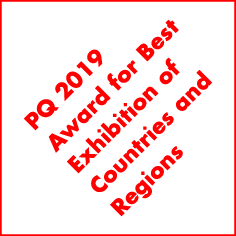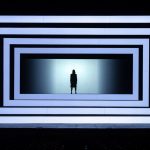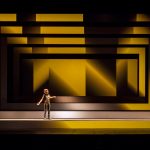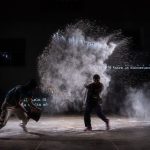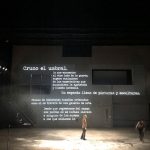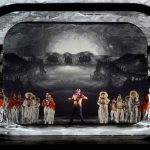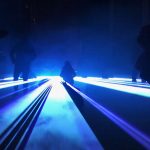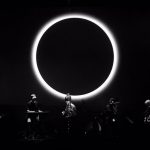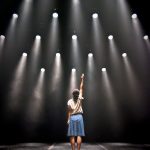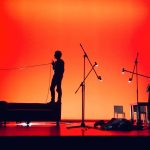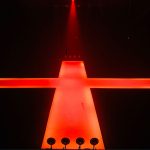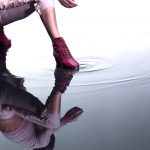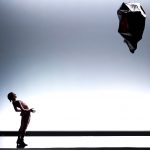Behind the mysterious name of Cube.bz is one of the most prolific creative couples in Catalonia: María de la Cámara and Gabriel Paré. Based in Agullana (Alt Empordà), these designers ‒ trained at the Institut del Teatre de Barcelona and on the main fringe stages ‒ jointly explore space and light. “We are not really interested in working these two fields separately.” Binomials seem to be the natural ground where they feel more comfortable: they work together in the Empordà region and the rest of Catalonia, they move indistinctly between the design of the performance space and lighting... It is in fact in these intermediate areas where they find the most fertile ground for their creativity. Although they have a studio in their country house in Agullana, they point out that in the end their creation and research process takes shape on the stage. “The motorway is our studio.” This versatility and mobility has also become clear in our meetings. We have visited them twice. The first, on the stage of the Teatre Grec in Barcelona while they were completing the premier of the show El monstre al laberint, directed and choreographed by Constanza Brnčić; the second, in their country house in Agullana.
Their curriculum is so extensive and varied that it is impossible to summarise. They have worked with artists and companies such as General Elèctrica, Àlex Rigola, Societat Doctor Alonso, Marcel·lí Antúnez, Albert Pla, Los Corderos and Rosalía. But, apart from their productions, if something defines them it is their work methodology: research as the main motivation and a very personal artistic vision that is never subordinated to that of the artists with whom they work but directly dialogues with them, establishing ethical and aesthetic understanding that nurtures any process in which they participate. An artistic and political viewpoint on the creation that feeds off references as (seemingly) disparate as American rationalist architecture, Camarón de la Isla, the Lumière brothers, Alvar Aalto, Caravaggio, rumba and punk.
They work in dance, theatre, music, cinema, art installations and architecture: “We transfer what we learn in the world of art installations to the world of theatre and what we learn in the world of music to the world of dance. It is in this ambiguous environment of the living arts that we feel more at ease.” They exemplify this inseparability of light and space through the figure of the architect: “An architect would never be asked to design a building and, later, someone else to decide where the opening to should be placed to allow in natural light.” Light affects the materials and volumes of the space and, therefore, María and Gabi find it contrived to conceive them separately. This relation, however, also takes place the other way round: “We work the light elements as scenic elements. A spotlight not only lightens but also has a specific performative presence. We conceive the performance space by taking into account the arrangement of the lighting material in a spatial sense.” Just as with other scenography professionals we have talked to, María and Gabi have a more extensive vision of what was traditionally related to design and lighting: “We don’t work with light just so scenery can be seen properly but to create a dramaturgy, a three- dimensional space.”
They both relate this particular idiosyncrasy of their work method to the circumstances in which they began their professional life: “We began working at a time when the contemporary dance world was beginning to think beyond dance alone and was approaching the world of theatre: a time, what’s more, in which there was a significant crisis that affected the whole sector. This means that the limits are blurred.” This learning method, which inevitably involves experimentation, clearly reflects the artistic personality and creative curiosity of María and Gabi.
The first meeting with the “Cube” (as they are known in the sector) ended with a reflection on the cultural policies that concern the alternative living arts and performing research: “It’s clear that the cultural policies on the living arts involve a distribution of resources that should be rethought. Alternative proposals are always left with a tiny slice of the cake [in comparison to more classical proposals]. And the most classical proposals feed off alternative and research proposals.” For María and Gabi, the theatre has the same function as any other artistic discipline: it disturbs, makes you think, nourishes and creates a society with a critical spirit. However, they emphasise that the most experimental living arts have the capacity to combine reflection and criticism with entertainment and diversion: “And it seems that nobody is aware of this.”
You can find out more about the work of Cube.bz on their website:
www.cube.bz


